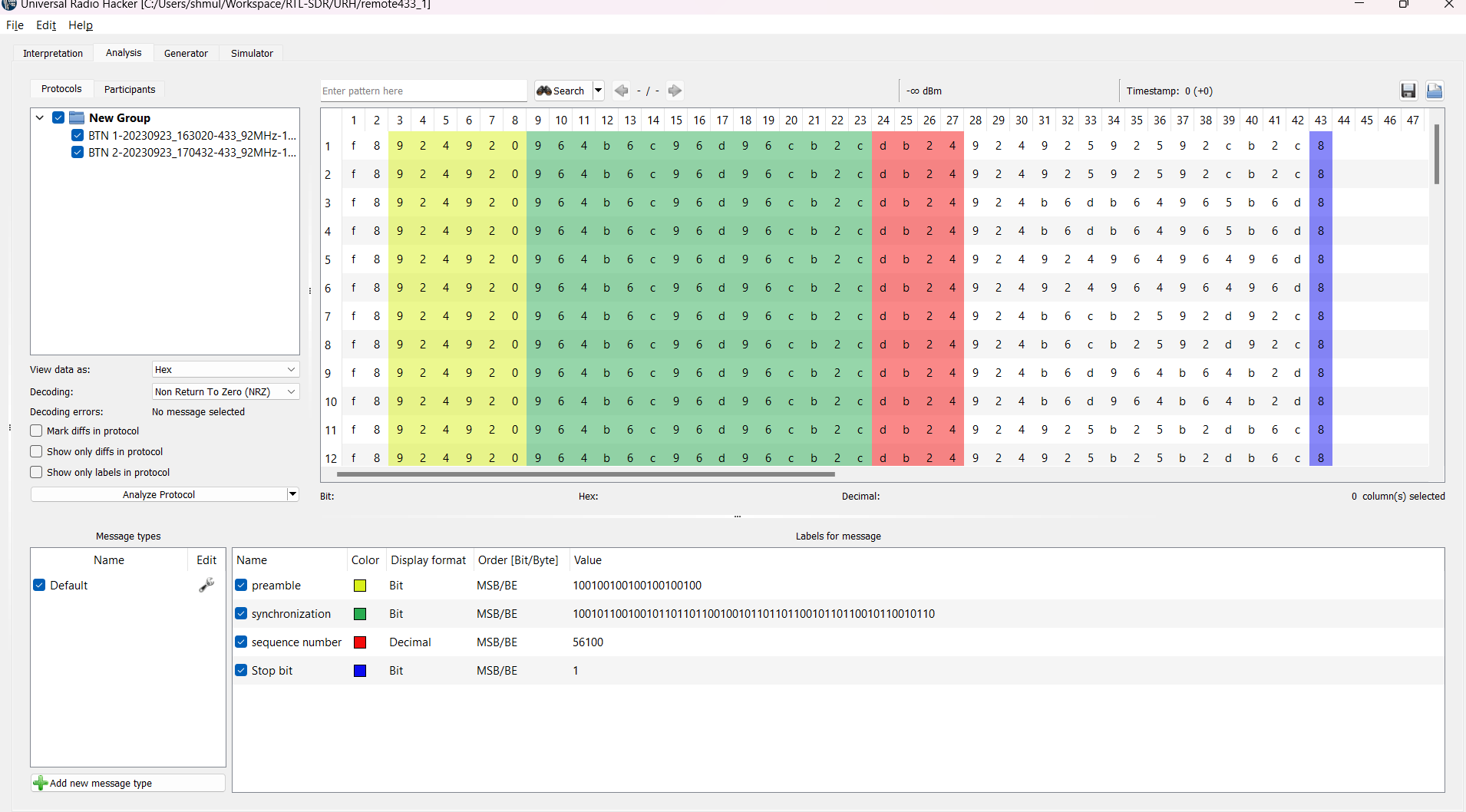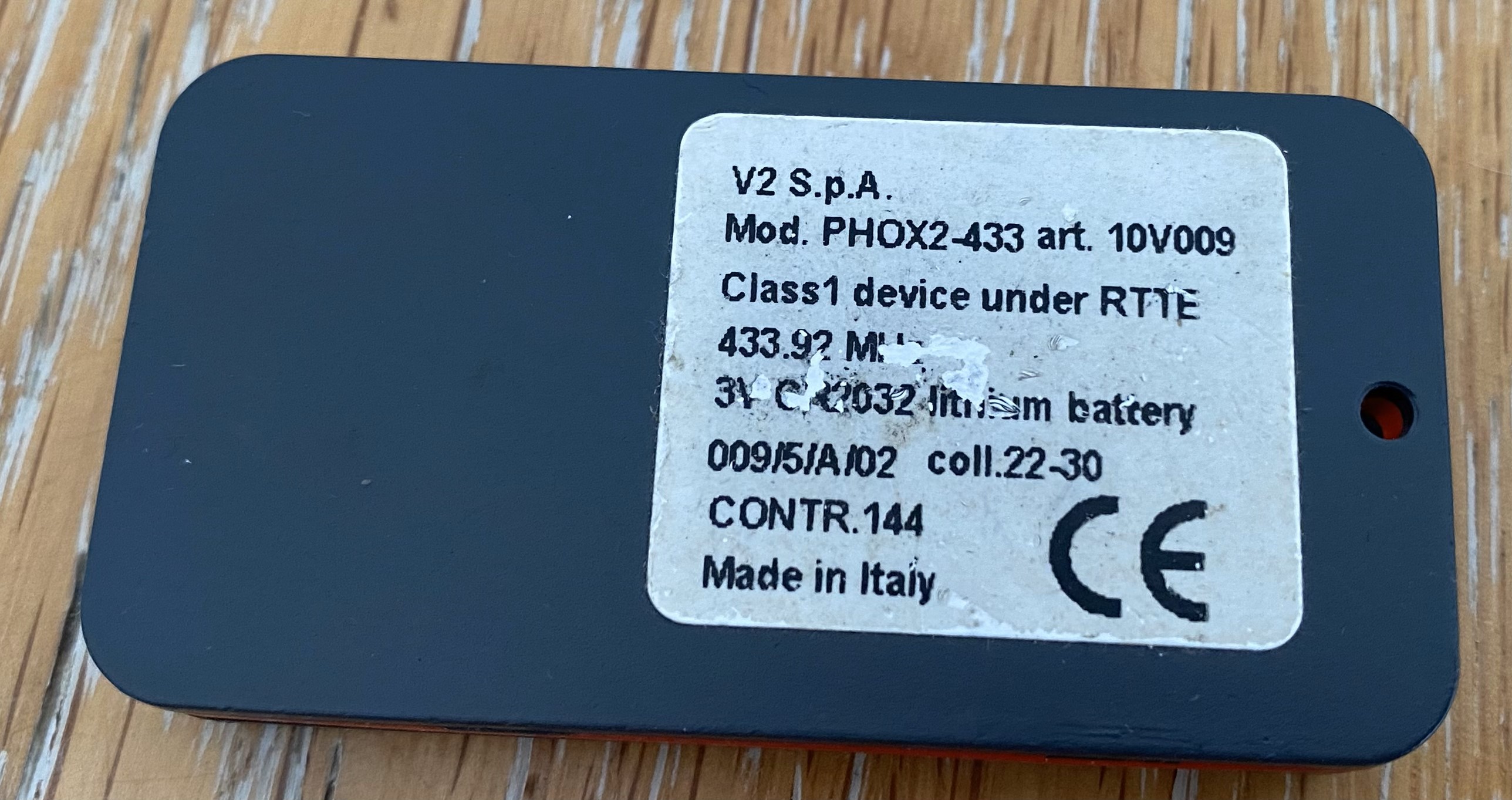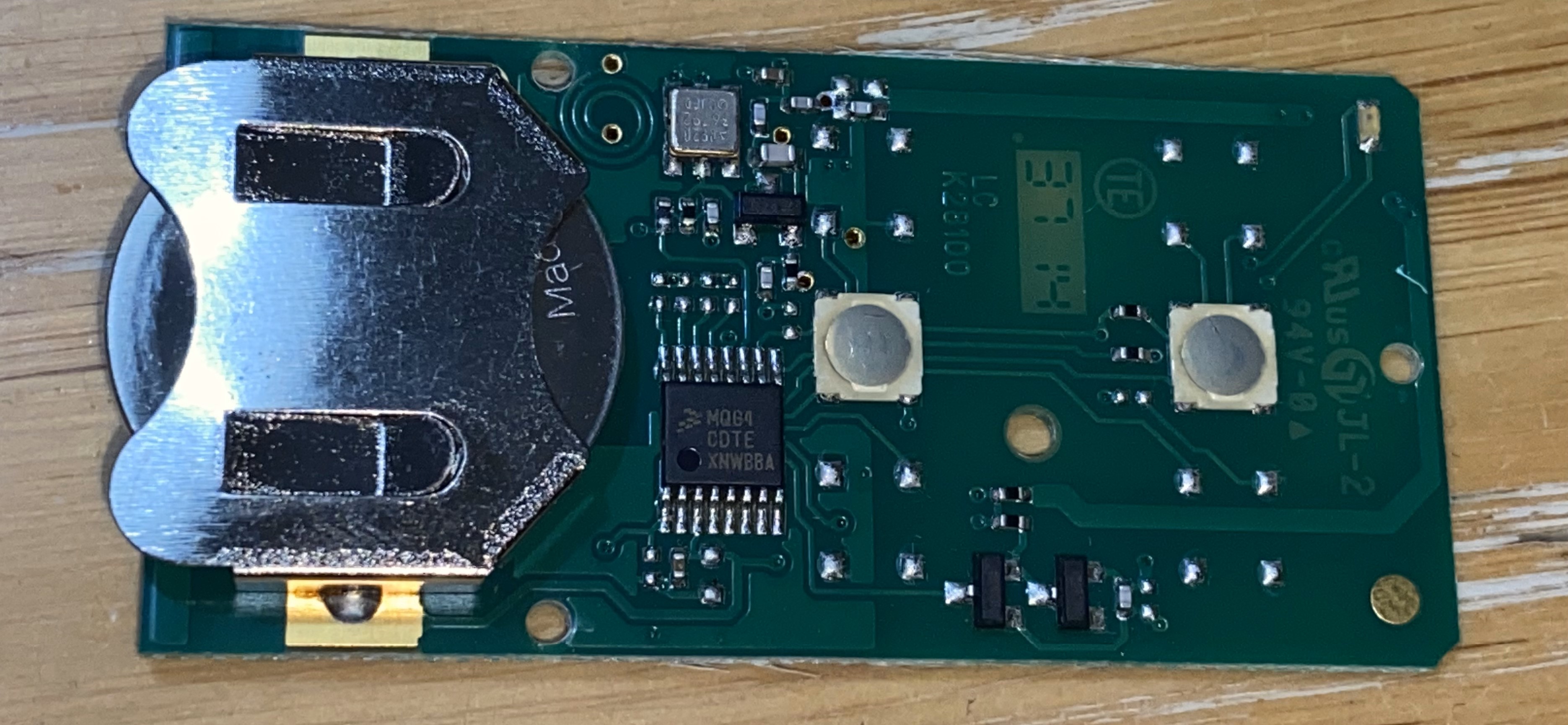To learn and understand the transmission protocol of a remote control, transiting on 433 MHz. Remote battery is a coin cell 2032. Research on the internet found that this remote controll has rolling code function. LINK
In order to analyze the signal I used the following software:
- Opening the enclosure - found a freescale MQG4 chip
- This is an (MCU) 20 MHz 8 bit CPU
- Link to DATASHEET
- Finding the remote frequency (this was easy as it is written on the back of the remote).
- Opening URH --> Recording signal --> and pressing on button 1 several times.
- Repeating process with button 2.
- Using autodetect parameters to find Center and Samples parameters.
- Sample parameter set to 400 ms.
- converting the bits to Hex on both samples.
- going to "Analytics" tab,converting bits to Hex, using Non return to zero decoding and analyzing protocol.

BTN 1
f8924920964b6c96d96cb2db64924492592592cb2c8 [Pause: 26006 samples] f8924920964b6c96d96cb2db64924492592592cb2c8 [Pause: 371610 samples] f8924920964b6c96d96cb2db649244b6db64965b6d8 [Pause: 25984 samples] f8924920964b6c96d96cb2db649244b6db64965b6d8 [Pause: 410546 samples] f8924920964b6c96d96cb2db649244b6cb2592d92c8 [Pause: 25982 samples] f8924920964b6c96d96cb2db649244b6cb2592d92c8 [Pause: 385684 samples] f8924920964b6c96d96cb2db649244b6d964b64b2d8 [Pause: 25969 samples] f8924920964b6c96d96cb2db649244b6d964b64b2d8 [Pause: 352200 samples]
BTN2
f8924920964b6c96d96cb2db2c9244b6596d92db648 [Pause: 25951 samples] f8924920964b6c96d96cb2db2c9244b6596d92db648 [Pause: 25932 samples] f8924920964b6c96d96cb2db2c924492db2c964b258 [Pause: 25957 samples] f8924920964b6c96d96cb2db2c924492db2c964b258 [Pause: 573040 samples] f8924920964b6c96d96cb2db2c9244b65b2cb24b6d8 [Pause: 25974 samples] f8924920964b6c96d96cb2db2c9244b65b2cb24b6d8 [Pause: 473506 samples] f8924920964b6c96d96cb2db2c9244b6496d96d96c8 [Pause: 25976 samples] f8924920964b6c96d96cb2db2c9244b6496d96d96c8 [Pause: 492250 samples]
- each press of the button will send the code twice (same code each time).
- The pattern describe in the tables:
Button 1:
| Sync | Action | Rolling Code | Stop bit |
|---|---|---|---|
| f8924920964b6c96d96cb2db | 649244 | 92592592cb2c | 8 |
| f8924920964b6c96d96cb2db | 649244 | b6db64965b6d | 8 |
| f8924920964b6c96d96cb2db | 649244 | b6cb2592d92c | 8 |
Button 2:
| Sync | Action | Rolling Code | Stop bit |
|---|---|---|---|
| f8924920964b6c96d96cb2db | 2c9244 | b6596d92db64 | 8 |
| f8924920964b6c96d96cb2db | 2c9244 | 92db2c964b25 | 8 |
| f8924920964b6c96d96cb2db | 2c9244 | b65b2cb24b6d | 8 |
- Sync is the unique hex agreed by the remote control and the receiver.
- Action is the operation- like open/close door.
- Rolling Code - A unique code, that follow sync algorithm, both controller and receiver use the same sync algorithm.
- Stop bit is a sign to the receiver the the transmission ends.
- In the picture there is a "CONTR" no. (CONTER.144), following instruction on the internet LINK, the remote CONTR index syncs with the receiver, means that this is probably Sync index.
- Explanation on CONTR number - LINK
- breaking down the rolling code I found a pattern: the rolling codes will start with 0x92 or 0xb6 on both buttons.


